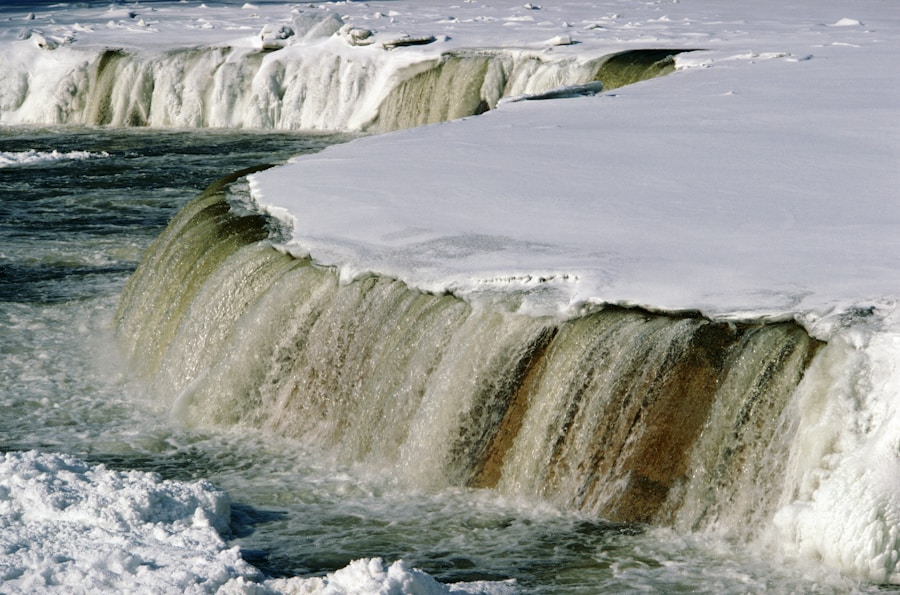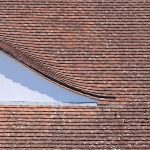
Ice dams are a common winter roofing issue that can cause significant damage to your home if not properly addressed. These dams form when snow on the roof melts and then refreezes at the edge of the roof, creating a barrier that prevents water from draining properly. As more snow melts, the water can back up behind the dam and seep under the shingles, leading to leaks and water damage inside your home. Additionally, the weight of the ice dam can put stress on your roof, leading to potential structural damage. It’s important to understand the impact of ice dams on your roof so that you can take preventative measures to avoid them and identify and repair any damage that may occur.
Ice dams can cause a range of issues for your roof, including water damage, mold growth, and structural damage. When water backs up behind an ice dam, it can seep under the shingles and into your home, causing stains on the ceiling, peeling paint, and even structural damage to the walls and insulation. Additionally, the weight of the ice dam can put stress on your roof, leading to potential sagging or even collapse in extreme cases. Mold growth is also a concern, as the moisture from the backed-up water can create an ideal environment for mold to thrive. Understanding these potential impacts can help you take proactive measures to prevent ice dams from forming and address any damage that may occur.
Preventative Measures to Avoid Ice Dams
There are several preventative measures you can take to avoid ice dams from forming on your roof. One of the most effective methods is to ensure that your attic is properly insulated and ventilated. A well-insulated attic will help prevent heat from escaping through the roof, which can contribute to snow melting and forming ice dams. Proper ventilation will also help regulate the temperature in the attic, preventing warm air from building up and melting snow on the roof. Additionally, keeping your gutters and downspouts clear of debris will help ensure that water can drain properly, reducing the likelihood of ice dams forming.
Another preventative measure is to remove snow from your roof after a heavy snowfall. Using a roof rake or hiring a professional to remove excess snow can help prevent the buildup of snow and reduce the likelihood of ice dams forming. Installing heat cables along the edge of your roof can also help prevent ice dams by melting snow and allowing water to drain properly. These preventative measures can help protect your roof from the damaging effects of ice dams and reduce the risk of water damage to your home.
Identifying Signs of Ice Dam Damage
It’s important to be able to identify signs of ice dam damage so that you can address any issues before they escalate. One common sign of ice dam damage is water stains on the ceiling or walls, which may indicate that water is seeping into your home from behind an ice dam. Peeling paint or wallpaper, as well as sagging or warped ceilings, may also be signs of water damage caused by ice dams. Additionally, if you notice icicles forming along the edge of your roof, this could be a sign that ice dams are forming and preventing proper drainage.
Another sign of ice dam damage is damaged or missing shingles on your roof. The weight of the ice dam and the backed-up water can put stress on the shingles, causing them to become loose or even fall off. If you notice any signs of damage to your roof or interior water damage, it’s important to address these issues promptly to prevent further damage from occurring.
Effective Repair Techniques for Ice Dam Damage
If you discover that your roof has been damaged by ice dams, there are several effective repair techniques that can help restore its integrity and prevent further damage. One common repair technique is to carefully remove the ice dam using a roof rake or by hiring a professional to safely remove the ice without causing further damage to the roof. Once the ice dam has been removed, any damaged shingles should be replaced to ensure that your roof is watertight and protected from further leaks.
Another effective repair technique is to address any interior water damage caused by ice dams. This may involve repairing or replacing damaged drywall, insulation, or other materials affected by water infiltration. It’s important to thoroughly dry out any affected areas to prevent mold growth and ensure that your home is safe and structurally sound. Additionally, addressing any underlying issues with attic insulation and ventilation can help prevent future ice dam damage from occurring.
Maintenance Tips to Keep Your Roof Ice Dam-Free
In addition to taking preventative measures, there are several maintenance tips you can follow to keep your roof ice dam-free. Regularly cleaning your gutters and downspouts will help ensure that water can drain properly and reduce the likelihood of ice dams forming. It’s also important to inspect your roof for any signs of damage or wear, such as loose or missing shingles, and address any issues promptly to prevent water infiltration.
Properly insulating and ventilating your attic is also crucial for preventing ice dams from forming. Ensuring that your attic is well-insulated will help prevent heat from escaping through the roof, while proper ventilation will help regulate the temperature in the attic and prevent warm air from building up and melting snow on the roof. These maintenance tips can help protect your roof from the damaging effects of ice dams and reduce the risk of water damage to your home.
Hiring a Professional for Ice Dam Repair and Maintenance
While there are several preventative measures and repair techniques you can take to address ice dam damage, it’s often best to hire a professional for ice dam repair and maintenance. A professional roofer will have the expertise and equipment necessary to safely remove ice dams without causing further damage to your roof. They can also inspect your roof for any signs of damage and address any issues promptly to prevent further damage from occurring.
Additionally, a professional roofer can provide ongoing maintenance services to keep your roof ice dam-free. This may include regular inspections, cleaning gutters and downspouts, and addressing any issues with attic insulation and ventilation. Hiring a professional for ice dam repair and maintenance can help ensure that your roof is properly protected from the damaging effects of ice dams and reduce the risk of water damage to your home.
Long-Term Solutions for Ice Dam Prevention
In addition to taking preventative measures and addressing any immediate issues with ice dam damage, there are several long-term solutions for ice dam prevention that can help protect your roof from future damage. One effective long-term solution is to install a metal roof, which is less prone to ice dam formation due to its smooth surface and ability to shed snow more easily than traditional shingle roofs.
Another long-term solution is to install a heat cable system along the edge of your roof, which can help prevent ice dams by melting snow and allowing water to drain properly. Properly insulating and ventilating your attic is also crucial for long-term ice dam prevention, as it will help regulate the temperature in the attic and prevent warm air from building up and melting snow on the roof.
Additionally, regularly maintaining your roof and addressing any issues promptly can help prevent ice dams from forming and protect your home from water damage. By taking these long-term solutions into account, you can help ensure that your roof remains protected from the damaging effects of ice dams and reduce the risk of water infiltration into your home.



